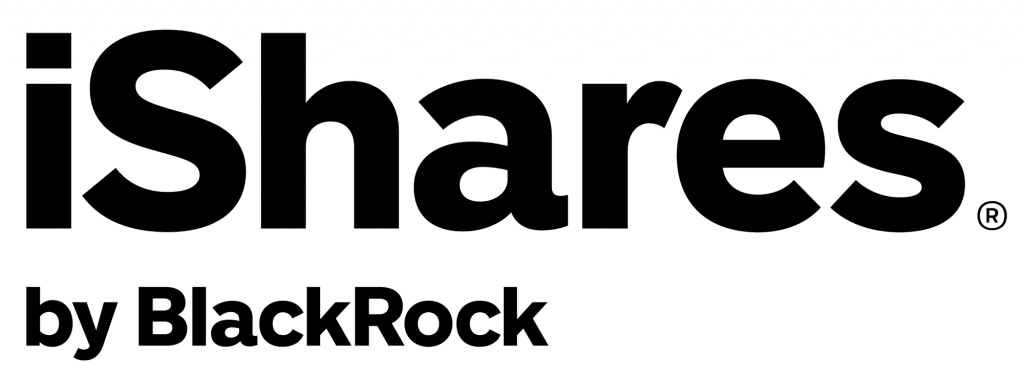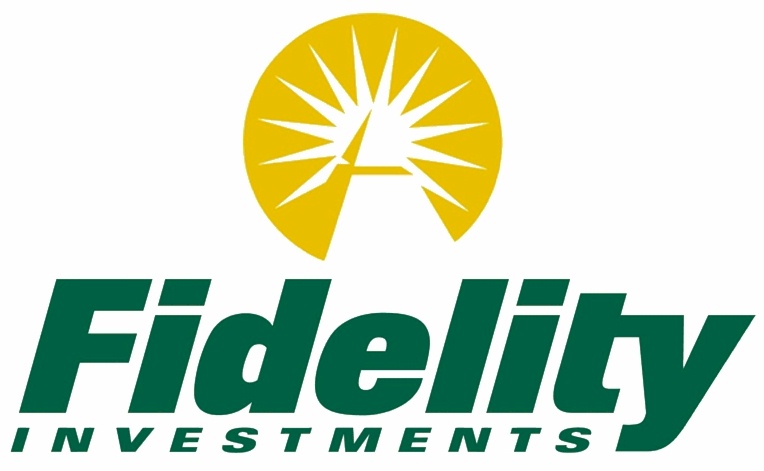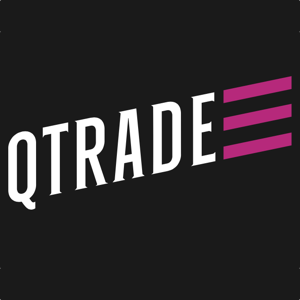If you are looking to invest in one or more utility companies but don’t know which to pick or how to get started, a utilities ETF is a great approach to take.
As of several years ago, investor-owned utilities in the US served 72% of US electricity consumption by consumers.
Investing in utilities through an ETF will allow you to diversify your exposure beyond one or several companies and should help to reduce volatility.
I’ll go over the best utilities ETFs in Canada below and cover some of their specific features.
Pros and Cons of Utilities ETFs
As with all investments, choosing to invest your money in one or more utilities ETFs comes with its advantages and disadvantages. There is no free lunch when it comes to investing.
- Generally stable and above-average income levels (mainly through company dividends)
- Defensive characteristics of most utility stocks also apply to the utilities ETF
- A higher level of diversification relative to picking several utility stocks directly
- Utilities tend to be negatively impacted by rising interest rates
- Lack of explosive growth potential
- Changing government regulations can impact utility companies within the ETF
Overall, a utilities ETF can be a great investment for more conservative equity investors that also value a good income stream.
7 Best Utilities ETFs in Canada

- Ticker: XUT.TO
- Inception Date: April 12, 2011
- Assets under Management: $254.7 million
- Management Expense Ratio: 0.60%
- Yield: 3.76%
- Management Style: Passive
- Risk Rating: Medium
- Stock Price: $24.4
- YTD Return: -1.29%
iShares’ XUT ETF is a large Canadian utilities ETF that aims to invest in Canadian utility companies. XUT is a passive ETF that follows the S&P/TSX Capped Utilities Index. It is one of your best options for a plain-vanilla investment into a basket of Canadian utility companies.
XUT is fairly concentrated relative to most typical ETFs. The ETF invests in roughly 16 Canadian utility stocks – this is limited by the number of publicly-traded utility companies in Canada.
Some types of utility companies included in XUT are:
- Electric utilities
- Multi-utilities
- Renewable electricity utilities
- Gas utilities
- Independent power producers
The ETF has a long performance track record and is large in terms of assets under management. It is offered at a fairly high management expense ratio relative to most passive equity ETFs.
XUT pays distributions to its investors on a monthly basis, and the fund offers an attractive yield.
If you are looking for exposure to Canadian utility companies, iShares’ XUT ETF is a great choice to consider adding to your portfolio.
2. BMO Equal Weight Utilities Index ETF

- Ticker: ZUT.TO
- Inception Date: January 19, 2010
- Assets under Management: $437.3 million
- Management Expense Ratio: 0.61%
- Management Style: Passive
- Yield: 4.12%
- Risk Rating: Medium
- Stock Price: $18.74
- YTD Return: -2.49%
BMO is a dominant player in the Canadian ETF market and also offers a utilities ETF through ZUT. The fund looks to invest in Canadian utility companies on an equal-weight basis. It is another excellent choice to consider if you are looking for a plain utilities ETF.
ZUT is a passive fund that tracks the Solactive Equal Weight Canada Utilities Index. Similar to XUT, ZUT also has roughly 16 underlying stock holdings. This is again due to the limited number of publicly-traded Canadian utility companies that the fund can choose from. It is more concentrated than most ETFs.
Underlying utility companies include:
- Renewable energy utilities
- Multi-utilities
- Electric utilities
- Gas utilities
- Independent power producers and energy traders
The fund has a long performance track record and is very large in terms of assets under management. ZUT is fairly expensive relative to passive stock ETFs, being priced marginally higher than XUT.
BMO’s ZUT ETF pays an attractive distribution yield to investors on a monthly basis.
ZUT is another great choice for Canadian utility exposure through an ETF.
3. BMO Covered Call Utilities ETF

- Ticker: ZWU.TO
- Inception Date: October 20, 2011
- Assets under Management: $1.90 billion
- Management Expense Ratio: 0.71%
- Management Style: Active
- Yield: 8.63%
- Risk Rating: Low-to-Medium
- Stock Price: $9.91
- YTD Return: 0.21%
BMO offers a second utilities ETF here in Canada – its ZWU covered call utilities ETF.
In terms of its underlying investment, it invests in utility companies on an equal-weight basis, similar to ZUT. The ZWU ETF also offers covered call writing, which helps to boost the fund’s income potential as well as slightly reduces volatility.
Given ZWU’s covered call approach, it is an actively-managed fund. The fund invests in both Canadian and US utility companies, expanding its scope beyond that of ZUT. With roughly 25 underlying stock holdings, it is slightly less concentrated (but still concentrated relative to broader ETFs).
Although the majority of the ETF is invested in utility companies, ZWU also invests in communication services companies as well as energy companies.
The ZWU ETF has a long performance track record and is the largest Canadian utilities ETF by assets under management. Since the fund has an active covered call strategy in place, it is offered at a higher management expense ratio than passive ETF peers.
The fund pays a very attractive distribution yield on a monthly basis to investors.
If you are looking for a very high-income stream from your utilities ETF, ZWU is an excellent choice to consider.
4. Utilities Select Sector SPDR Fund

- Ticker: XLU
- Inception Date: December 16, 1998
- Assets under Management: $15.9 billion
- Management Expense Ratio: 0.10%
- Management Style: Passive
- Yield: 3.07%
- Risk Rating: Medium
- Stock Price: $59.96
- YTD Return: -3.02%
Although a few Canadian-listed ETF options exist for investors to purchase, there are a larger number of utilities ETFs that are listed in the US. These ETFs can be purchased by Canadians by using US dollars on the US side of Canadian investment accounts.
XLU invests exclusively in companies contained within the S&P 500 index that fall within the utilities sector. This means that your utilities exposure will come entirely from US companies.
The XLU ETF is listed on the New York Stock Exchange and units will have to be purchased using US dollars. The fund passively tracks the Utilities Select Sector Index.
The fund has roughly 30 underlying stock holdings, making it a fairly concentrated ETF.
XLU has a very long performance track record and is an incredibly large fund by assets under management. It is offered at a low management expense ratio, especially relative to Canadian utility ETF counterparts.
US funds are typically offered at lower management expense ratios and tend to be much larger than ETFs in Canada.
The XLU ETF pays attractive distributions on a quarterly basis to investors.
As a US-listed option, XLU is a great choice for getting exposure to the utilities sector in the US.
5. Vanguard Utilities Index Fund ETF

- Ticker: VPU
- Inception Date: January 26, 2004
- Assets under Management: $7.0 billion
- Management Expense Ratio: 0.10%
- Management Style: Passive
- Yield: 3.19%
- Risk Rating: Medium
- Stock Price: $129.79
- YTD Return: -3.3%
Another US-listed utilities ETF is offered by Vanguard, one of the largest ETF managers in the world. VPU will, like XLU, have to be purchased in US dollars on the US side of your accounts.
VPU invests in US utility companies of all capitalization sizes (small, mid, and large). It passively tracks the performance of the MSCI US Investable Market Utilities 25/50 Index. The ETF is listed on the New York Stock Exchange.
The VPU ETF has approximately 65 underlying stock holdings, making it more diversified than other utilities ETF peers on my list. The fund is very large by assets under management and has a very long performance track record.
Subindustry examples that are contained within the ETF include:
- Electric utilities
- Multi-utilities
- Gas utilities
- Water utilities
- Independent power producers
- Renewable energy
VPU pays distributions on a quarterly basis to investors and offers an attractive yield. It is offered at a low management expense ratio relative to most passive ETFs.
Vanguard’s VPU ETF is another excellent US-listed to consider for utilities exposure in US dollars.

- Ticker: IDU
- Inception Date: June 12, 2000
- Assets under Management: $1.01 billion
- Management Expense Ratio: 0.39%
- Management Style: Passive
- Yield: 2.49%
- Risk Rating: Medium
- Stock Price: $76.87
- YTD Return: -2.47%
iShares also offers a US-listed utilities ETF under the ticker IDU. The IDU ETF is listed on the New York Stock Exchange and will have to be purchased on the US side of your accounts in US dollars.
The IDU ETF invests in US utility stocks of various sizes. It passively tracks the Russell 1000 Utilities RIC 22.5/45 Capped Index. The fund has roughly 45 underlying stock holdings, making it decently diversified for a utilities sector ETF.
iShares’ IDU ETF has a very long performance track record and has amassed a large amount of assets under management.
The majority of IDU’s underlying holdings can be classified as either electric utilities or multi-utilities.
IDU offers a decent distribution yield which it pays out to investors on a quarterly basis. It is a fairly expensive utilities ETF relative to other US counterparts but is priced more attractively than Canadian counterparts.
IDU is a good ETF option if you are looking to invest in US utility companies with US dollars.
7. Fidelity MSCI Utilities Index ETF

- Ticker: FUTY
- Inception Date: October 21, 2013
- Assets under Management: $2.1 billion
- Management Expense Ratio: 0.08%
- Management Style: Passive
- Yield: 2.91%
- Risk Rating: Medium
- Stock Price: $38.66
- YTD Return: -3.31%
Fidelity, another large player in the asset management space, offers a US-listed utilities ETF – FUTY. Like other US-listed ETFs on my list, it will have to be purchased on the US side of your accounts in US dollars.
The FUTY ETF follows the performance of the MSCI USA IMI Utilities Index and will invest in at least 80% of the index’s underlying stocks. It is a passively-managed index ETF.
FUTY will provide investors with targeted exposure to the performance of the utilities sector of the broad US stock market. The fund has approximately 70 underlying stock holdings, making it well diversified for a utilities sector ETF.
Fidelity’s FUTY ETF has a long performance track record and has a considerable amount of assets under management.
FUTY pays distributions to investors quarterly and pays an attractive yield. In terms of fees, FUTY is one of your most inexpensive options when it comes to a utilities sector ETF.
For fee-conscious investors looking for a US-listed utilities ETF, FUTY is a great option.
Are Utilities ETFs Worth the Fees?
Before purchasing a utilities ETF (or any other fund or investment), it’s important to consider whether the investment is worth the fees being charged.
If you are indifferent between investing in Canadian or US utility companies and are willing to invest using US dollars, you will be able to save a considerable amount in fees by purchasing a US-listed utilities ETF.
Canadian-listed utilities ETFs tend to come with above-average management expense ratios. Especially for ETFs that have a smaller number of holdings, it may be possible to purchase the utility stocks that are held in the portfolio directly. This will save you from paying the fund’s management expense ratio.
In addition to having multiple underlying utility holdings, a utilities ETF will also rebalance holdings from time to time.
If you do not have a lot of time on your hands to dedicate to your investment portfolio, utilities ETFs are likely to be worth the fees that they charge.
How to Buy the Best Utilities ETFs in Canada
The cheapest way to buy ETFs is from discount brokers. My top choices in Canada are:

- 105 commission-free ETFs to buy and sell
- Excellent customer service
- Top-notch market research tools
- Easy-to-use and stable platform

- Stock and ETF buys and sells have $0 trading fees
- Desktop and mobile trading
- Reputable fintech company
- Fractional shares available
To learn more, check out my full breakdown of the best trading platforms in Canada.
Conclusion
Especially during times of heightened market volatility, the utility sector can be a defensive choice to consider.
If you don’t have a lot of time to research one or more individual utility companies, a utility sector ETF can be a fantastic way to get diversified exposure to the sector.
Before investing in a utilities ETF or any other fund or investment, make sure that it matches your risk profile and investment objectives.
If you are looking for individual utility stock ideas, be sure to check out my article on the best utility stocks in Canada.





